Dear Friends,
Before I share one of my favorite essays, “On Dreams and Fairies: Coming to Bere Island” about my encounter with the spirits of place in the Beara Peninsula, I want to send blessings to you on this day, the Summer Solstice, when daylight is at its apex. This is a sacred time to honor the ongoing pulse and orbit of our planet as we journey around the Sun.
In addition to these long days, tomorrow is the June full moon—called the Strawberry Moon because it arrives just as strawberries are ripe. This solstice full moon will be very low in the sky, and thus will appear quite large and bright, making for a spectacular moonrise. In times such as these, it is impossible not to see that we live in a magical world.
As I re-enter this essay about my first summer journey to Bere Island, I am filled with the uncanny wisdom of our dreams and the spirits of the earth—called fairies by the Irish. May these remembrances open a path for our hearts and minds to be present to the beauty around us, as we all bear witness in these precarious times.
Peace and blessings to you -
Carolyn
You can listen to and/or watch a video of this essay here.
On Dreams & Fairies: Coming to Bere Island
In the movie version of this story, the camera opens with a wide aerial view of a lush green checkerboard Irish island. It is 1996, and the day is fine, the ocean a bright, slate blue. The camera pans the island above glistening green fields, a tiny village of about a dozen buildings, then to an open field in the middle of the island with a lone standing stone. Guitar strands begin with the classic rock song “Into the Mystic,” by Irish musician Van Morrison.
The camera moves on to the southern edge of the island, with massive granite cliffs—wild, gorgeous, uninhabitable. Far below, looking like small ants, a man walks with a herd of sheep in steep green hills. A sea gull swoops by. At the far edge of the island, the camera pans down to a stone cottage set above the cliffs, made of beautiful gray stone, a modern glass door, and a clean new roof.
Then the camera switches to a noisy scene at a harbor. Two Irishman direct a woman with short brown hair and pale skin as she backs her rental car over the metal plank of a ferry. Van Morrison begins to sing, We were born before the wind. Also younger than the sun... The woman sticks her head out the window, looking to the men for direction as she lets out her clutch and lurches backwards over the plank.
“Ah, you’re doing fine!” calls the bearded Irishman.
“Well, not quite!” cries the other one. “Jaysus, will you watch it? A sharp turn now, OK there, you’re all right.”
On the ferry the woman sits for a moment in the car, her breath a bit quick. Then she gets out and stands in the wind, her eyes towards the green island a few miles across the ocean. Three more cars back expertly onto the ferry. The plank is drawn up, ropes are pulled, the ferry begins to move. Van Morrison sings Hark, now hear the sailors cry. Smell the sea and feel the sky. Let your soul and spirit fly into the mystic…
In real life, it was me backing awkwardly onto the ferry, and me standing on the deck, holding onto the rail as we crossed green-gray choppy seas. I put my hand on my chest, an instinctive move to ease my pounding heart. It was a family trait: in that moment I might have been my Aunt Mae, born in County Galway in 1907. Across the Bantry Bay, Bere Island slowly grew before my eyes. It was unreasonably beautiful, a sparkling, green jewel.
In half an hour, I was driving off the ferry, easy now that I faced forward, and onto the grassy wet island. There was no soundtrack, but there might have been. I was 38 years old, and had embarked upon the defining quest of my life. In my body, there was a rightness as to time and place.
I drove over the main hill across the island, and followed directions to a renovated stone cottage known as “Jim’s Place.” It was the last house at the end of an isolated road.
Pictures of Jim, an old Irish bachelor who had died a decade before, were set up on an oak bureau inside, along with a few pictures of his parents and siblings. My host showed me how to work the heat and the water heater, and began a fire in the large, beautiful old stone fireplace, and let me be.
When I was alone, I walked through the place and marveled. The house had been lovingly renovated with tiled floors and a modern kitchen. The stone walls and fireplace of the original cottage had been retained, and two new rooms had been added to the back and side of the house. Jim’s Place, probably 150 years old, was now light-filled and open, the opposite of the stone cottages I saw when I first came to Ireland at fourteen years old in 1972. Traditional Irish stone cottages are often dark inside; windows were small so as to not destabilize the structure.
But this cottage had been opened up. The interior was finished with clean white walls. Two skylights and a glass door poured light into the rooms. I admired the tasteful, simple art on the walls.
I could hardly believe my good luck.
The August evening was warm. Though I would experience all manner of weather during my stay, that first night was balmy. I sat outside in the long bright summer air, and even felt the need to put on sunscreen. I gazed out at the sea; the vista was startling to my soul, so beautiful as to be almost wounding, wide, open, and deep. I’d glimpsed the island’s massive cliffs as I drove to the cottage; the sea was loud and wild. Beside me were a few books of poetry, and my journal was open. But all I could do was sit and stare. I put up my feet, and closed my eyes. This was going to be great.
I wrote for a bit in my journal, then out of the blue it hit me: how utterly alone I was. I was a woman by myself. Who knew who lived on this island? Had word gotten out that I was there by myself? Scenes from violent movies, all the awful things done to women flashed through my mind. No one would know if anything happened to me; no one expected to hear from me for a week or more. I looked out at the sea, and felt the great edge to which I had come.
What was I thinking? I saw myself, a small, defenseless woman before the great expanse of the unknown. I walked back inside, pulled on pajamas, and crawled into a little twin bed in the back room. I heard noises on the road and jumped. I wrapped two blankets tight around me, feeling more anxious, vulnerable and alone as darkness descended. Maybe I would have to leave tomorrow. This was a little crazy. Just now there was nothing to do but hunker down and get through the night. I would figure it all out in the morning.
Four dreams decided the issue.
In the first dream, I awoke in the cottage, alone and frightened. I heard noises in the living room; and realized that someone had broken in. I screwed up my courage and walked out into the front room. I moved to turn on the light, but the lamp wouldn’t work. I tried to shout, but in a familiar dream moment, only a squeak came from me. Then I heard a noise out back. I went to the side door and saw that a car was parked in the road behind the cottage. Its bright headlights beamed past the house and all the way down to the sea. There in the light, a group of matronly women in Sunday dresses, rather like Aunt Bee of the 1950’s television series Andy of Mayberry, froliced in the waves. They pulled off their shoes and ran in the surf, kicking up the water and laughing.
I woke with a start. It had been so real; it took a moment to comprehend that no one was in the cottage, no car was parked behind me, no women were dancing at the ocean. I scribbled down the dream. My heart was slowly calming from the dank fear and adrenaline of the early part of the dream. But the ending? It fell into the category of just plain incredibly cool.
In the second dream, I woke again with a start, feeling yet again afraid and alone. In the dark I sensed other presences, and realized that a small cat slept on the bed with me. Another cat was curled across the room. A dog was rounded on the floor by the bed. They must be the animals of the house, I thought. They want company. The dog slept peacefully; I realized that he would bark if there was danger. In the dream, I drifted easily back to sleep.
In the third dream, a thinning old man walked me around the cottage. He showed me how certain doors and windows work, pointed out art on the walls, and oriented me to the place. In the dream, I thought it was probably Jim, the old bachelor Irishman of the cottage. Then in the fourth dream, the wife of the couple who renovated the cottage showed me around. She noted pieces of art she had put up, where she stored candles and other things that made the place beautiful. She wanted to make sure I was aware of them, so that I realized their beauty and would take care of them.
I woke and opened my journal to write the dreams down. I could still sense the comfort of the animals, and though I knew they weren’t there, found myself glancing around for them. I walked through the house. The morning was an Irish morning; not much sun. But daylight had returned. The quiet cottage was just itself.
I reasoned that serial killers would probably not choose a tiny island where they couldn’t fade into a crowd and there was no get-away except on a ferry that wouldn’t leave until morning. I remembered talks with the owners of the cottage about the friendly neighbors across the road, who were familiar with Jim’s Place and would be willing to take me on a walk up into the hills.
I looked around the little place. It was rather a mess. I’d hardly put away the groceries and what little I had unpacked from suitcases before curling up in bed was scattered about. I ate a breakfast of toast, apples and Irish tea, and set about making the house right.
I’ve had thousands of dreams in my life. They’ve scared me, bored me, made me scratch my head, made me happy. I’ve had nightmares I couldn’t shake for days. Dreams that hovered above, tantalizingly out of reach, dreams that left me strange and out-of-sorts, dreams that were luminous, like the time I realized I could fly and soared above my neighborhood. I have seen extraordinary dream work done by Jungians, African healers, and Native American medicine people. But in all that time, and in the twenty years since those days on Bere Island, these four dreams still strike me as the most direct and generous of any I’ve ever had.
What poured down to me that night was the purest of welcomes.
My wife Jean is a frequent and deep dreamer, and this part of her life connects her with her poet’s soul. She says that dreams provide evidence that something higher exists. To her, it is obvious that the earth and the growing world before our eyes is sacred. But that there are other worlds which are part of this one, or close by, that our lives can be lifted up by something invisible, that is made clear to her by the fact of dreams.
If I had been wondering about whether we can be lifted up by something invisible as I made myself small and little in the back room that first night, feeling the dark expanse of the world and every bad thing humans do, I was no longer wondering about this upon waking in the morning. Clear-headed and calm, I set about my first day.
In part, I had unwittingly been given the heebee-jeebees by my sister Mary just before I left. I was telling her about my upcoming journey to Ireland, including my plan to stay alone on a little Irish island for a month. She had some concern about my staying all by myself on a small, lonely island none of us had heard of before. Then she said, “Are you afraid of fairies?”
Well, no, I responded, why would I be? Years before, my lovely sister had surprised the family when she married a Palestinian Muslim, and later converted to Islam. She too had defied our father, known her own heart, and married against his wishes. She had a wide and beautiful faith that clearly sustained her. She prayed five times a day, bowed down with her whole body. When in public, she wore a veil. She was still one of the funniest people I knew, one of the deepest and smartest; she was still my sister. But I did not imagine that fairies had much currency in her Muslim world view.
I learned that night, in fact, that Muslims do believe in fairies, known as jinn. The jinn not only exist in folklore, but are described in the Koran. The tradition differentiates between angels of the celestial realms, humans who are earthy and made from clay, and the jinn, said to be created from fire. The jinn, Mary told me, come in all forms. Some were beautiful, helpful and friendly, but some could be malevolent. They favored lonely places and the sea. Just be careful, she said.
Well. I didn’t know what to say. Maybe until then I had even, sort of, hoped I would come upon a fairy or two in Ireland. As in, I wanted to really meet the traditions of the place.
Many old Irish country tales tell of people taken by fairies. Sometimes they were in a magical place where they are happy for a long time, maybe a hundred years or more, until they missed human life and wanted desperately to return. But these were stories from a long time ago. I was surprised to learn that my devout sister absolutely believed in small creatures who live in the hills and the deserted places of the earth, creatures who are not visible to humans but who could see us, take human form, and mess with us and our stuff. They sometimes stole things, Mary mentioned.
Now I was sort of chuckling. Really, sister? Like the leprechauns or “little green men” our mother liked to blame for the disappearance of our belts, shoes, school papers, and the sweater she could never find?
Our mother had been told about the little green men by her father, who’d heard of them from his Irish mother Kate Ryan Carey. The fairies who made their way down to us in 1960s America were little green men scrambling about our house, and were mostly harmless pranksters. As a girl I pictured them down in the basement in some invisible closet, hoarding loads of our stuff. But they didn’t trip us or harm us or occupy our bodies or take us away for a hundred years.
“Well, no,” I told my sister. “I’m not afraid of the fairies. I don’t really think they want to harm us.”
“That belief might protect you,” she said sagely.
Writing down the dreams that morning, I could feel that a small grace had come. My sister was right. There were jinn in the uninhabited hills and wild places, or fairies, know as the Sidhe in Irish, or sometimes called simply” the Good People” in country Ireland. I looked around the cottage. I’d been incredibly lucky that the spirits of this place were welcoming.
I’d come to Bere Island with hope of connecting with my family ancestors. Yet those who had come to greet me were the local spirits of the cottage itself. I had no ancestry from that island, no previous connections there at all. A small part of me thought—who are you? I’ve come for my own people.
But the actual world always insists itself. The land. The material world of stones, houses, trees and rivers have their own spirit. They have also imbibed the people and histories around them. This is what the old Irish tales tell us—that spirit can and does inhabit places. Fairies are quite present in modern Ireland; they are said to be specific to a certain lone tree, or a bend in the river, or standing stone circles or fairy rings. They attach to land and place.
The fact that in my dream, old Jim who lived so long in the cottage wanted to show me around, that the current owner showed me the beauty she had created, that the spirits of the animals of the cottage had come—well, it all made a quiet sense. It was physical, local, and, strangely ordinary, in an otherworldly kind of way.
You can listen to or watch a video of me reading this essay at a public event a few years ago.
This is an excerpt from my forthcoming book, The Light of Ordinary Days.
All photographs by the author.
I’m curious who is going to take the one spot available on my Ireland tour & writing retreat this September!




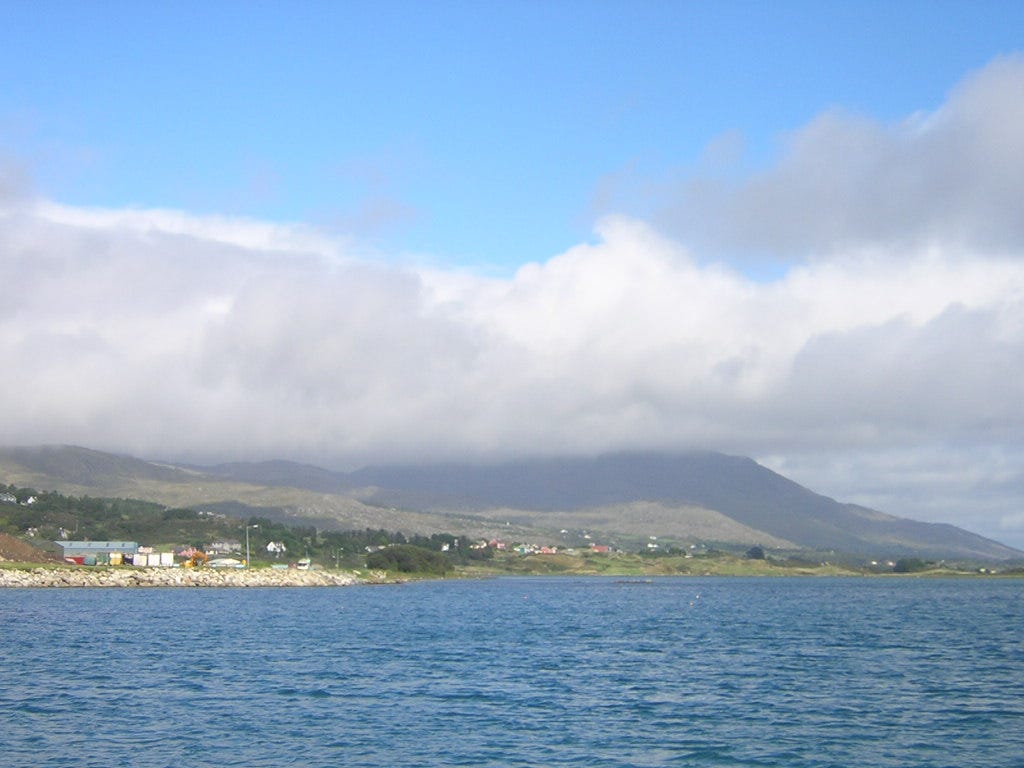
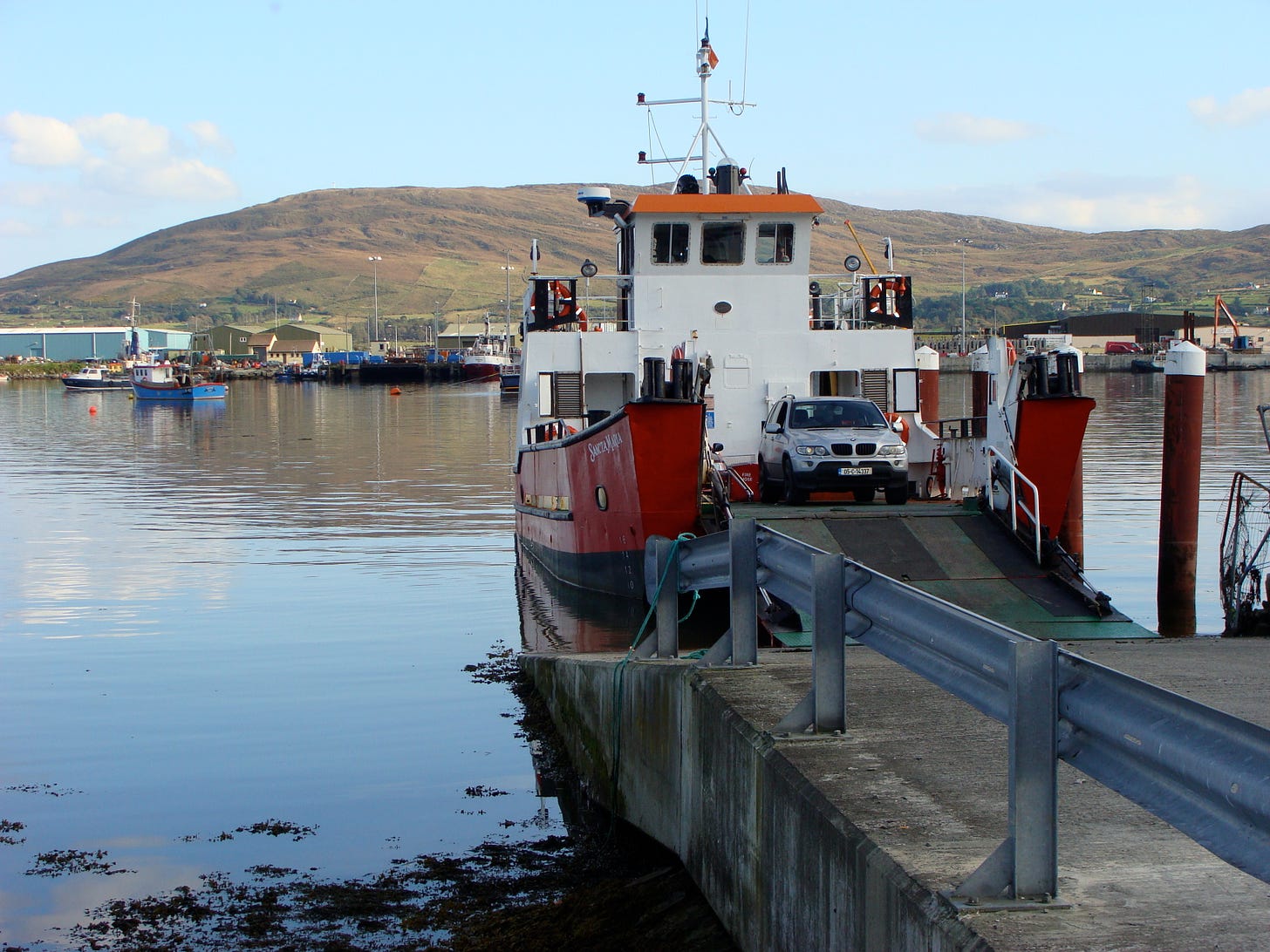

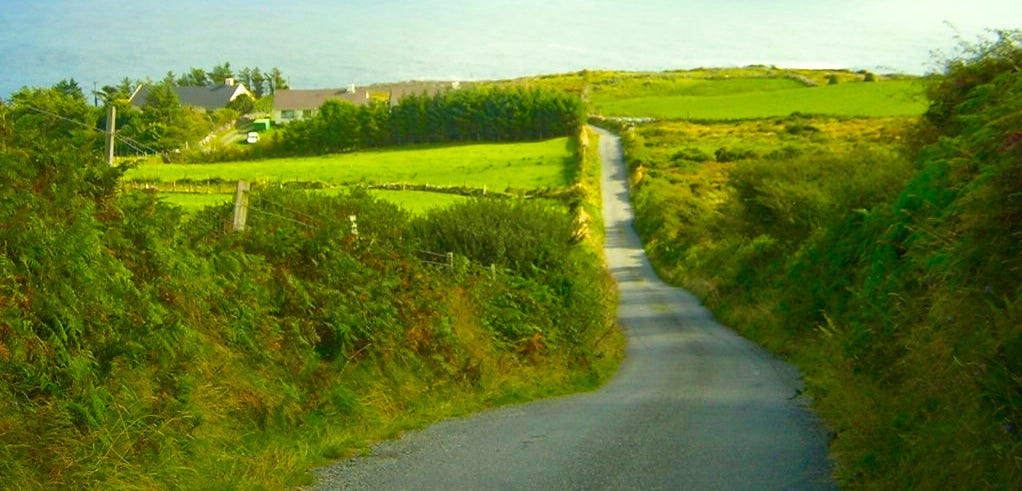
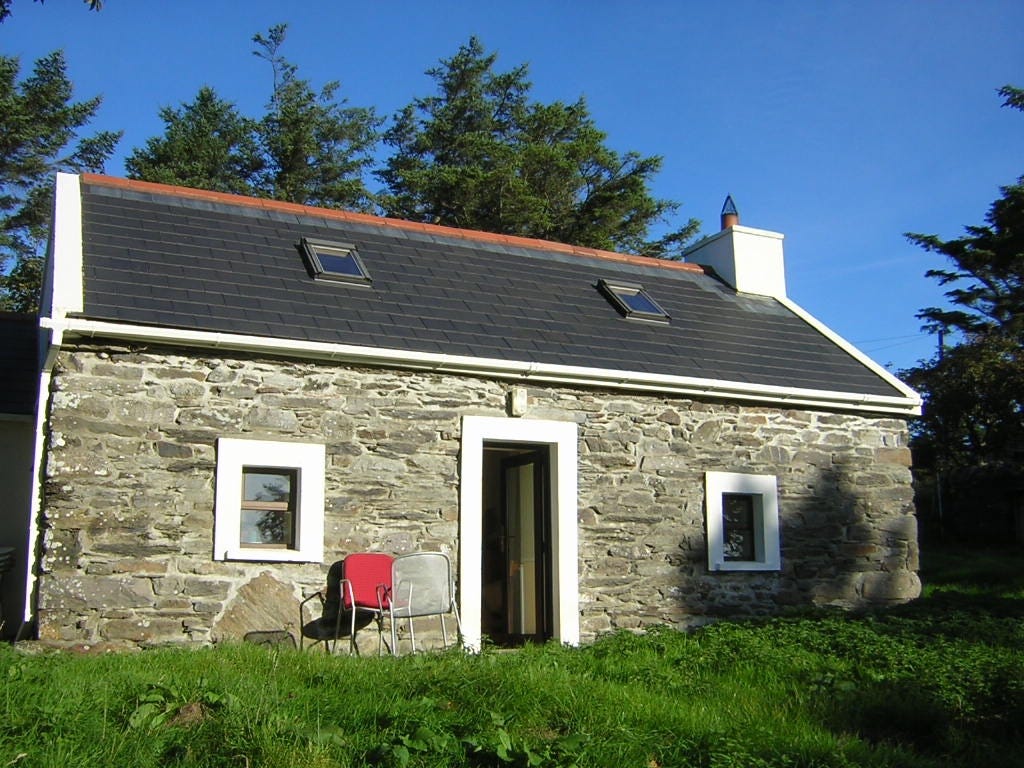

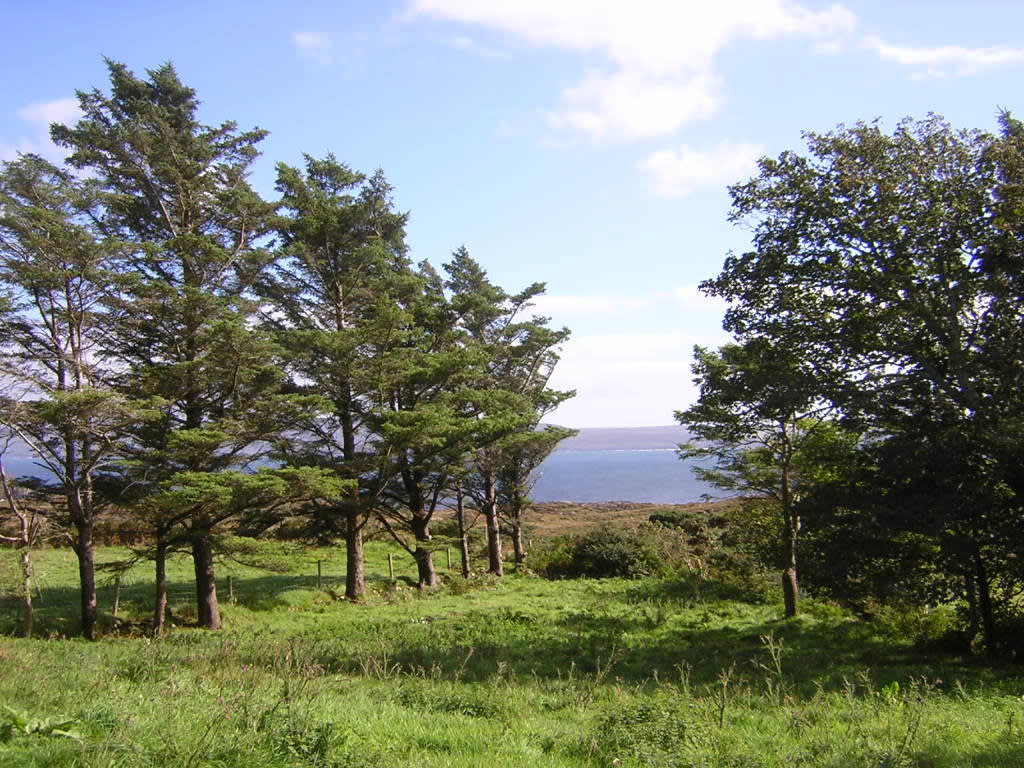

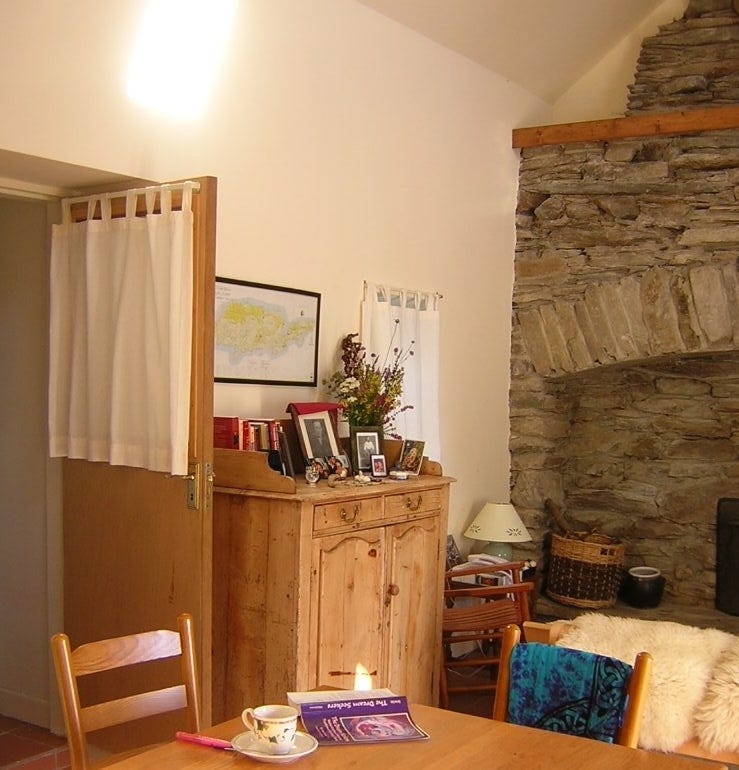
So good, Carolyn. Thank you!